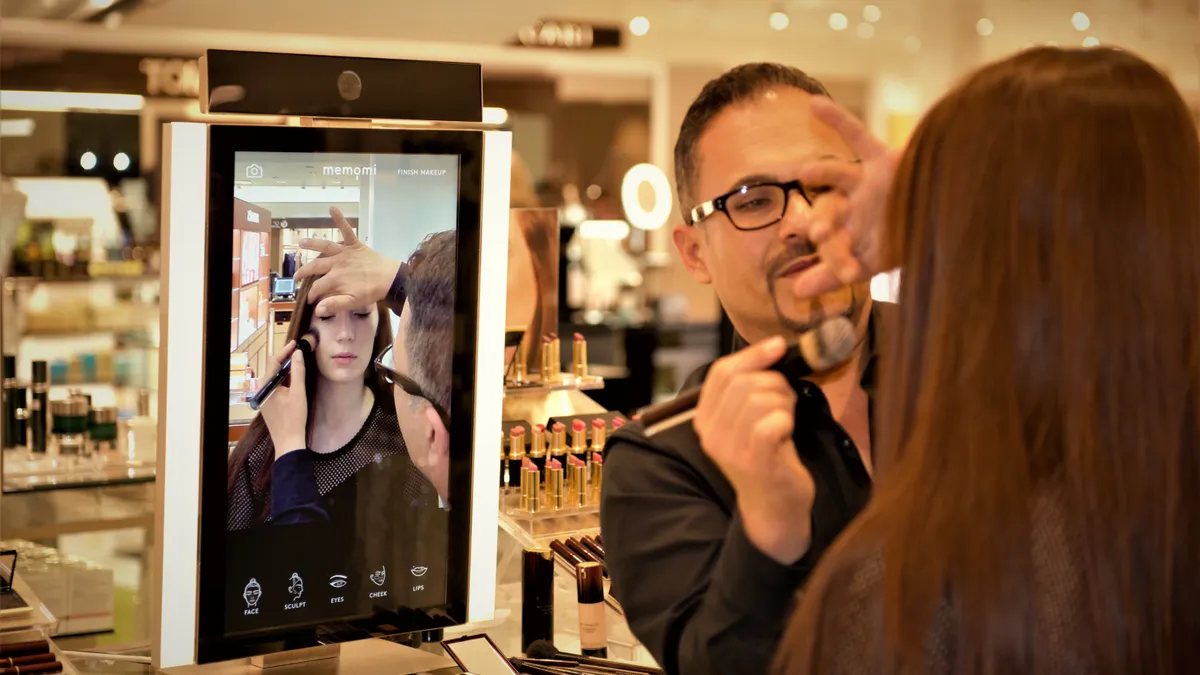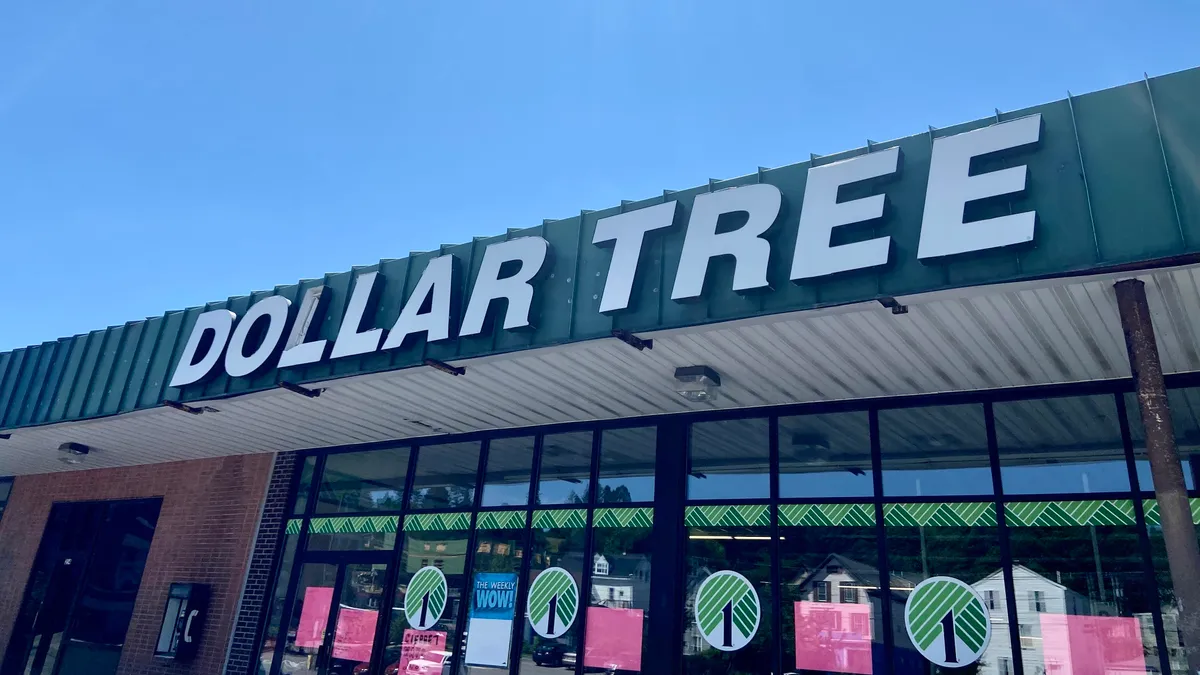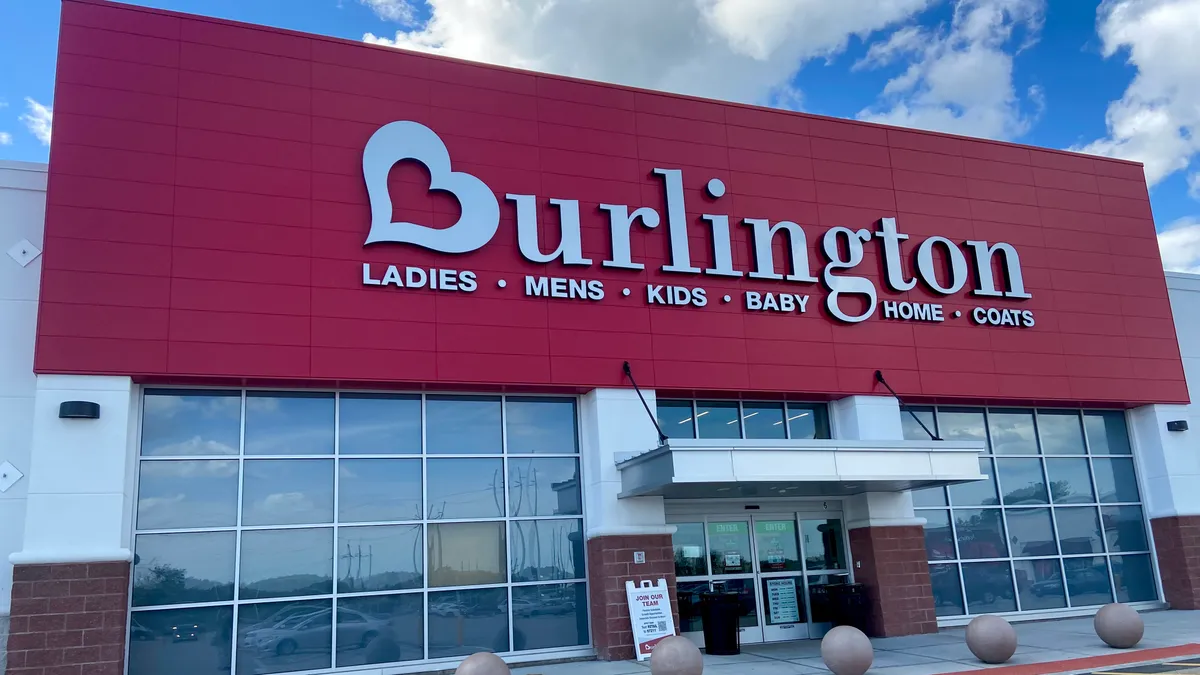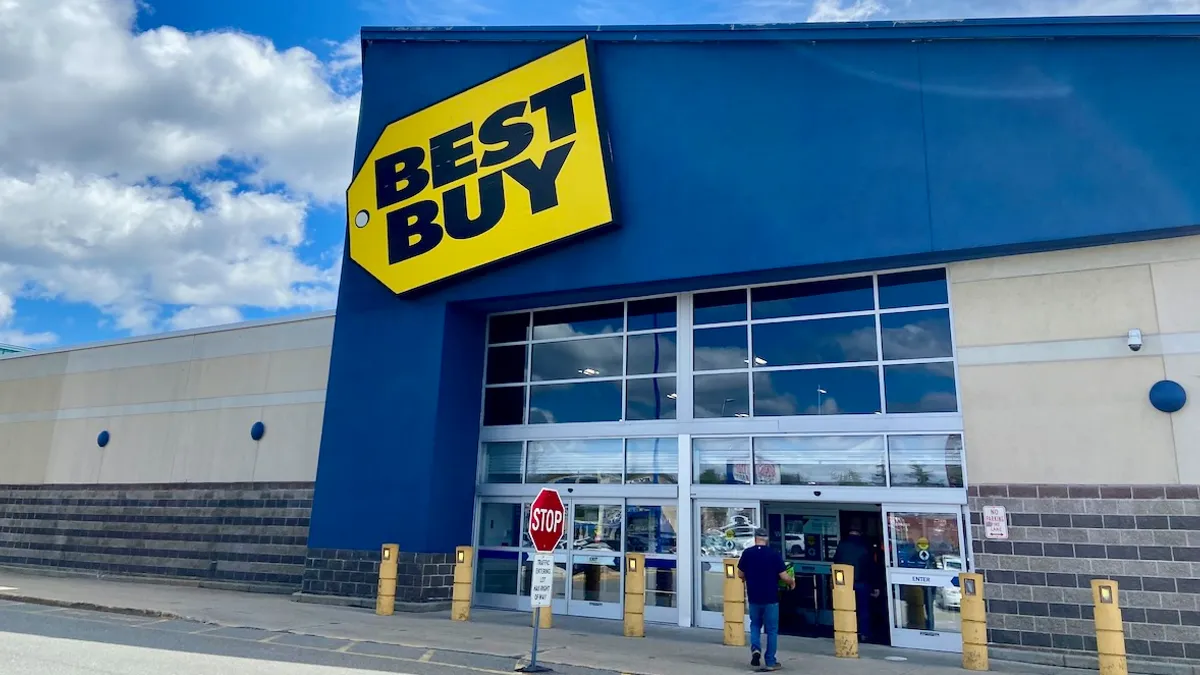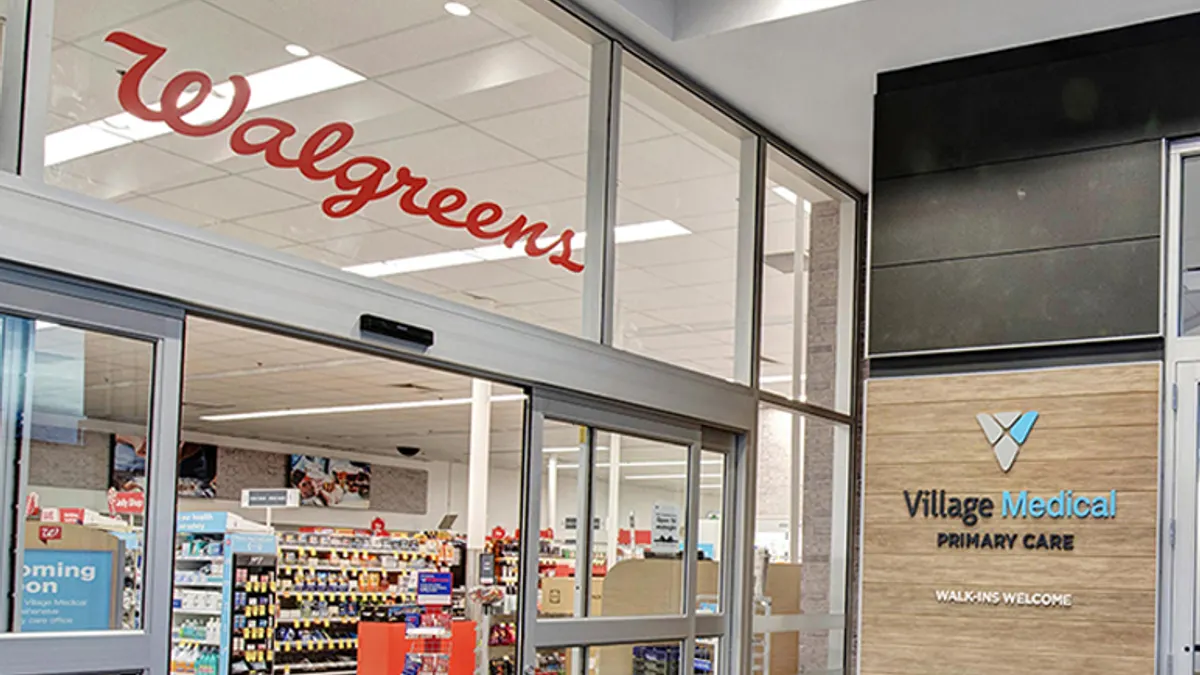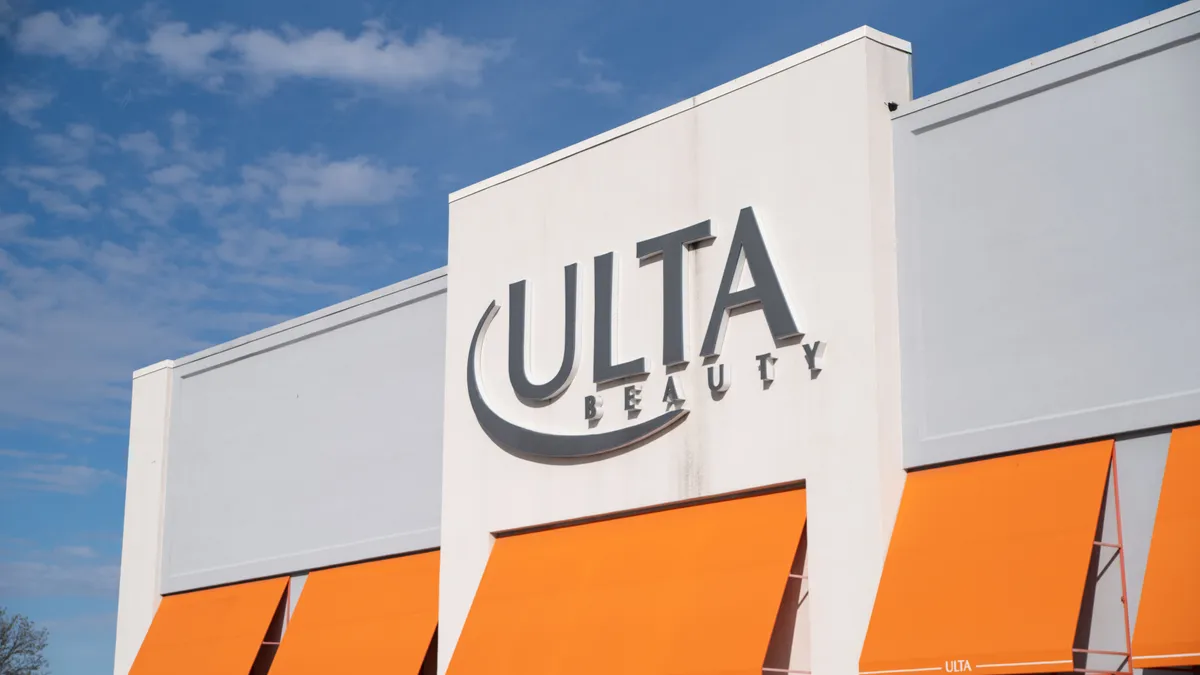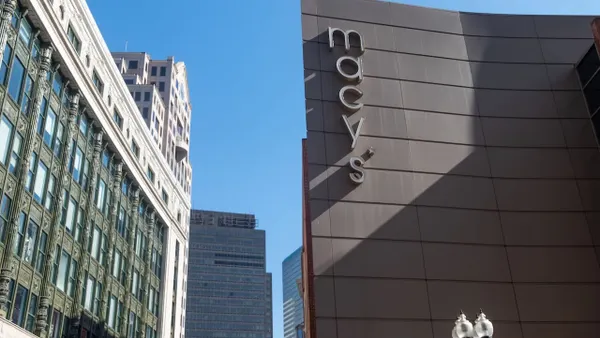It all started with a tap on the shoulder: "Hey, we're going to do an innovation lab and you're going to do it."
That's how Scott Emmons describes how he got his role as the head of Neiman Marcus' innovation lab in 2012. "That's it. It was very exciting; also kind of scary.”
The innovation lab, dubbed iLab, was one of Michael Kingston's first big ideas for the luxury department store retailer. Kingston had just joined Neiman Marcus three weeks earlier as its new CIO, and Emmons didn't really know him yet. No boundaries were set on the project in the beginning, but the longevity of the project rested on finding success. Though Kingston has since moved on from Neiman Marcus, the iLab and Scott Emmons have stayed put — and innovation has become both a story of success and failure.
After all, innovative probably isn't the first adjective that comes to mind when you think of department store retailers. The struggling department store space today is beset by challenges such as falling foot traffic, consumer demand for faster fashion and mounting debt issues. Neiman Marcus itself is on shaky ground, recently pulling plans for a long-awaited initial public offering and reporting its Q1 revenues fell 7.4% over last year as a result of dwindling traffic.
“Not everything works. Most of the time, it won’t.”

Scott Emmons
Head of the Innovation Lab at Neiman Marcus
In such times, innovation isn’t just a good idea — it’s critical to survival. Changing shopping habits and emerging technologies bring new challenges to retailers like Neiman Marcus — and while they are no silver bullet, Emmons believes innovation labs can help solve the problems facing retailers. “If you are encountering headwinds, one of the ways to counteract that is to look for a new or better way to deliver value to your customers,” he said.
The iconic 100-year-old luxury department store retailer is trying to turn technology innovation into a core value, according to Emmons. As Neiman Marcus attempts to recapture shopper interest and drive traffic back to its stores, reimagining the in-store experience is about one thing: the customer of the future.
In an interview with Retail Dive, Emmons opened the vault on Neiman Marcus' latest experiments, its successes and failures, and the process that got the company there in the first place.
How it all got started
When the innovation lab first got off the ground five years ago, Emmons was a team of one — and, technically, he still is. “I'd qualify that I'm an innovation team of one that just has to go find a lot of volunteers,” he said. “An innovation team of one can't be effective. I have to be the champion that sallies the forces and goes and makes it happen.”
In becoming the head of the innovation lab, Emmons had to evolve his understanding of the customer. With an IT background, he had always thought of the business as his customer; in his new role, the experience of the shopper became the focus. At the launch of the project, Emmons started to build up use cases, obtained new technologies and was given a little conference room for his experiments. Once the basics were covered, he called CEO Karen Katz to get her feedback and hoped for the best.
“She really saw value in having this kind of thing happening internally at Neiman Marcus and was excited about two or three of the ideas she wanted to pursue for perhaps deployment into the stores,” he said. “From there on, it's been full steam ahead.”
Even before the launch of the innovation lab, Emmons was heavily focused on reimagining the digital aspects of the in-store experience at Neiman Marcus, working his way up through the IT department and eventually founding the enterprise architecture team in 2009. In planning Neiman Marcus' first innovation lab, Emmons quickly realized the department store needed a philosophical shift in its thinking about the relationship between stores and data: The thought process should be less about wiring up certain parts of stores and more about delivering data to points of need in stores.
But that also meant the department store had to put its money where its mouth was. “We had to get the business to start accepting the fact that it was probably going to require a bigger budget to do data into the stores in a way that we could deliver some new customer experience things and with data that was more than about inventory and transactions on the POS,” he said.
While necessary, innovation doesn't come cheap. Emmons has crafted a detailed process that weeds out ideas that aren’t worth piloting in stores: First, he starts by whittling down big ideas with volunteers in an initial evaluation period. Then, the idea is reviewed by the Customer of the Future committee — made up of a cross-functional team of executives, store managers and associates — and a prototype is created in the lab to test the proof of concept. If all goes well, Emmons then finds a store to pilot the idea.
For a cash-strapped retailer like Neiman Marcus, return on investment is always a key concern during the vetting process. “In the end, when you do technology right, you do have to pay for it,” Emmons said. “There is a cost associated with getting into the store, so I have to think about technology that is scalable and the business is going to want an ROI on the technology. [Executives] want that. That's the first thing we're going to talk about probably, so that's high on the list of how are we going to prove that.”
The ROI doesn’t always come in the places and ways you might expect, he says from experience. “You have to be creative about where that's going to come from.”
The iLab's success stories
There are usually 13 or 14 ideas swirling around the iLab at any given time, with three actually deployed in stores. Emmons has a long running list of ideas, which come anywhere from store associates to himself all the way to the C-suite.
Not all innovation needs to be shiny, but it should make shopping more convenient and make good business sense for the retailer, too. Take ChargeItSpot, for example: In 2014, Neiman Marcus became the first luxury retailer to roll out free phone charging lockers. Today, every Neiman Marcus store now houses at least one. The convenience to consumers is obvious, but what does the department store retailer get out of offering the service? Because the kiosk makes customers use their phone numbers as an unlock code, it doubles as a customer acquisition tool. The store can send a targeted text to shoppers within 30 minutes of removing their phones from the charging station. “The value of that more than pays for the units,” Emmons said.
One of Neiman Marcus’ most buzzed about innovations is its Memory Mirror, which Emmons began working on nearly two and a half years ago in partnership with MemoMi, a digital imaging software company. The technology was first introduced in stores in the shape of a full-sized fashion mirror; shoppers could record a video of themselves twirling around in an outfit, and download or share it on social media. The pilots went so well that Emmons helped adapt the product so it could be used for eyewear purchases last summer. In December, the technology moved into the beauty department, with Neiman Marcus rolling it out at Le Métier de Beauté beauty counters in at least 20 locations. Plans are to expand further this year.
“Customers can use the video to go back and look at the tutorial for how to use the beauty products. It solves a real problem for the customer, and that’s a tenet for any project,” Emmons said. “It also solves problems for my brand associates. They have this amazing clientele. She can go review a session and record all the products that were tried during the session.” That could allow store associates to personalize future visits.
Memory Makeover™ Mirror from MemoMi Labs Inc on Vimeo.
The iLab is also dipping its toe into visual search with its Snap, Find, Shop feature on the Neiman Marcus mobile app. Google and Snapchat have pushed such technology to allow consumers to use their smartphone cameras to help search for information. Neiman Marcus is leveraging the technology through its app, where shoppers can take a picture of an item and then search through the Neiman Marcus product database for something similar, starting with shoes and handbags.
“It’s very Buck Rogers. It’s Shazam for shopping,” Emmons described. “As that tech continues to improve, we expect further experiments. You could take a pic of a whole outfit and it would tell you about the pants or top or shoes you’re wearing, as the guys that do this get better at it.”
While the project hasn't yet paid off on its initial investment, Emmons hopes that being an early adopter of such technology will pay dividends for Neiman Marcus as augmented and virtual reality technologies mature and customers become more accustomed to their presence in stores.
Voice assistant technology is also making its way into Neiman Marcus stores, just as Amazon’s Alexa and Google’s Home make their way into homes. Neiman Marcus is testing voice-command technology that helps streamline the in-store experience by leveraging a Siri-like device that enables store associates to more easily communicate with the backroom. In January, the retailer rolled out of these Theatro voice-controlled wearables at several of its off-price Last Call stores.
“It's a little wearable computer about the size of a key fob and when you press the button you give a voice command. It might be, 'Hello shoes,' and it's going to connect you to an associate in the shoe department or you might say, 'Hello register help' and it sends out the all-call for register-trained associates to come man the registers in the store,” Emmons explained. “With future enhancements it could be things like, 'Hello SKU lookup,' and I could then read a SKU number and it could tell me which stores had that item in stock. It's all voice command-based, and I think very inspired by Siri and those kinds of interfaces.”
While these experiments have become part of the in-store experience, many others have not — and failed to deliver on their initial promise.
Learning from failure
While failures don’t produce an immediate return on investment, they do provide a valuable learning experience — and Emmons has learned plenty of lessons. “Not everything works,” he said. "Most of the time, it won’t."
“Your companies are geared toward success, and you have to think about these experiments not as failures, but as learnings that can be applied to future projects,” Emmons said. “It’s hard to let go and say, ‘This should have worked.’”
One clear failure from the iLab that has stuck in Emmons' mind is the Neiman Marcus Mobile Wallet. The iOS application, similar in many ways to Apple Pay, was created to allow customers to make in-store payments without actually having a credit card present. But the innovation was essentially dead on arrival: “The tech was out of date by the time we got it built and launched," he said. "It was QR-based and touchless payment had already taken off." The mobile feature is no longer available.
Another innovation that fell flat on its face was the “fling wall.” The concept was to allow customers in the shoe salon to play with an iPad lookbook: When they found styles they liked, they could fling them from the iPad to a digital sign on the wall and curate their collection. Emmons thought it would serve as an engagement tool between associates and customers, as well as between customers shopping in groups.
“It mostly collected dust,” Emmons admitted. The lesson learned? The fling wall didn’t solve a real customer problem.
The customer of the future
Emmons was reticent to share the details of any future projects. But with the innovation lab's successes and failures in mind, he did look ahead to the trends that are influencing his thinking in 2017.
Right now, the industry is abuzz with talk of chatbots and artificial intelligence, and Emmons said he’s interested in a few projects that will test those waters. “I think customer service is the ground floor for this. It would be more interesting to me to elevate that to ‘How do I actually use it in line during the actual shopping?’ as opposed to I would like to think about beyond ‘Where's my order?’”
Emmons is interested in augmented reality as well, especially as the technology matures and becomes increasingly economic. "There will be some great opportunities there in the next 12 to 24 months."
Whether the iLab's next experiments sink or swim, nobody has the magic solution to the in-store experience, according to Emmons. But in a time of retail disruption, it's critical to experiment, innovate and find new ways to solve customer problems.
"We've gone in just a few years at Neiman Marcus from technology being just a back office utilitarian thing to a core value," he said. "Here I have this iconic luxury fashion retailer that has now embraced technology as our core — we're going to be the best at that."


